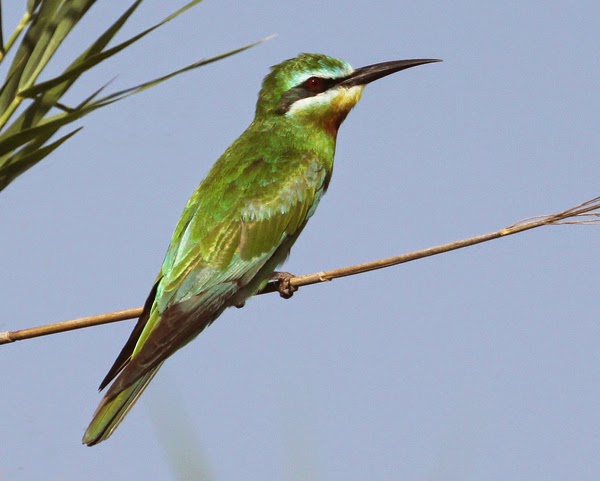There are Greater Flamingos here all the time. Rings that we have seen recently confirm what we already know about their origin - most come from colonies in Spain and France. Two that we saw at Castro Marim had both been ringed in July 2009 in Spain, at Laguna de Fuente de Piedra, near Malaga; one of them we had seen before in Tavira in November 2010 and in the Santa Luzia saltpans in June 2011; the other had been seen several times at Lagoa dos Salgados and Ria de Alvor.
There are very few Mediterranean Gulls here now so it was pleasing to find one at Olhão that had a colour-ring. It had been ringed in France in June 2013 at Barbâtre, Polder de Sebastopol, Vendée, a site from which we have had several other birds here in the past.
The same day, also at Olhão, there was a Lesser Black-backed Gull that had been ringed in July 2011 at Rauna, Farsund, Vest-Agder in Norway. It seems that this bird has spent quite a lot of its life around the harbour in Málaga and in fact was there only a month or so ago.
Slender-billed Gulls
Slender-billed Gulls
Using a telescope, reading the numbers and letters on the rings of flamingos, gulls and Spoonbills is child’s play compared with sorting out the details of multiple colour-rings on small waders. However, last Sunday, we managed to get photographs of two Sanderlings at Olhão that enabled them to be identified. The photographs were taken from quite a distance using a Panasonic Lumix FZ100 and they were pretty poor but sufficient to ascertain that one of them had been ringed in Iceland in May 2011 and the other in Greenland in June 2010. Both birds had been reported previously during the winter in the Olhão area and the Icelandic bird was also seen there in January 2012.
Sanderlings - spot the rings!
Finally, we were delighted to hear that Common Redshank H19 has made it back to The Netherlands after its (her) fourth winter in the Santa Luzia saltpans. We hope that she will attract a mate this year!
















